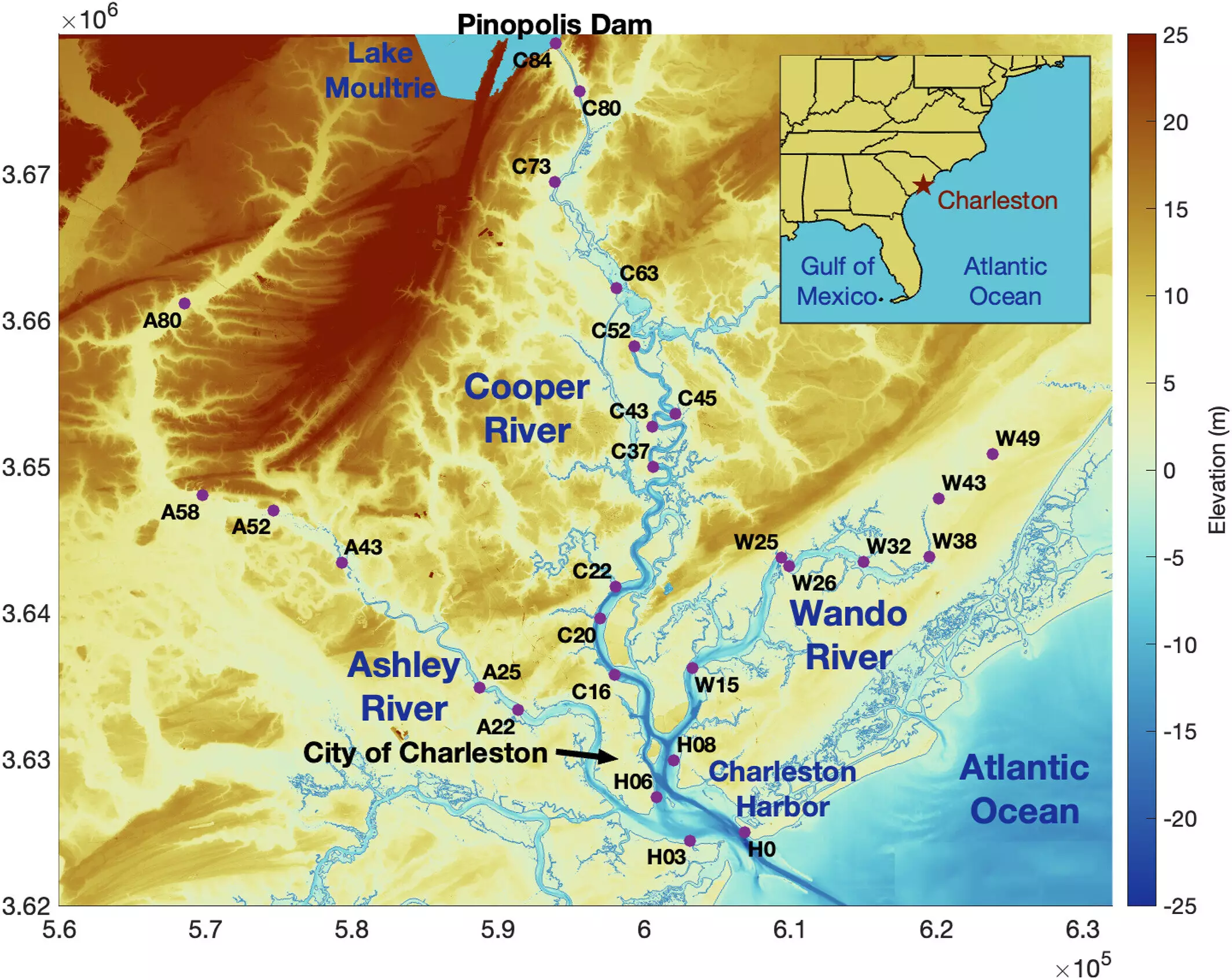In the face of mounting climate challenges, the construction of dams has emerged as a widely adopted strategy aimed at mitigating flooding risks, particularly in coastal regions vulnerable to extreme weather patterns. A recent study published in the Journal of Geophysical Research: Oceans sheds light on a paradox within this approach: while the intention behind dam construction is to reduce flooding, these structures may inadvertently escalate the severity of coastal flood events. This article delves into the nuances of the study, unraveling the complex interplay between coastal dams, estuarine geography, and storm surge dynamics.
The burgeoning popularity of dam construction stems largely from the urgent need to address environmental changes induced by climate phenomena such as rising sea levels, intensified storms, and saltwater intrusion. Proponents of damming assert that these massive structures can serve as critical barriers against coastal flooding, providing protection to populated areas. However, the study’s findings complicate this narrative, highlighting a critical point: the effectiveness of dams in flood mitigation is not a one-size-fits-all solution.
The cornerstone of the research lies in its exploration of how estuaries—where freshwater from rivers meets saltwater from the ocean—respond to natural and artificial interventions like dams. Utilizing data collected from Charleston Harbor in South Carolina, which spans over a century, researchers discovered that the relationship between storm surges and estuary shape is far more intricate than traditionally understood. Lead author Steven Dykstra, an assistant professor at the University of Alaska Fairbanks, emphasizes how the physical configurations of estuaries can dramatically influence flooding outcomes.
As estuaries taper inland resembling a funnel, traditional assumptions about diminishing storm surge intensity may be misleading. The study postulates that the introduction of a dam effectively alters the estuary’s form, creating artificial boundaries that can exacerbate flood risks under certain conditions.
One of the most striking revelations of the study is the profound effect of estuarine geometry on storm surge behavior. Dykstra illustrates this concept in a relatable analogy, comparing wave dynamics in a bathtub: “Certain frequencies of waves can cause water to slosh over the sides.” In this metaphor, the dam acts as an artificial wall, redirecting and amplifying waves generated by storm surges rather than diminishing them.
Moreover, the researchers expanded their analysis beyond Charleston Harbor, employing computer models to assess flood responses in 23 other estuarine systems, including those both with and without dams. The findings suggest a consistent pattern: the structural changes imposed by dams can lead to increased wave energy and flooding potential, particularly in regions where the basin shape becomes more constricted.
The implications of the study extend well beyond the immediate vicinity of coastal dams. Interestingly, the researchers found that areas situated significantly inland are not insulated from the consequences of coastal engineering. In the Charleston study, it was noted that substantial storm surges could occur over 50 miles inland—a sobering reminder that flood risks are a pervasive concern across broad geographies.
As sea levels continue to rise due to climate change, the interconnectedness of coastal and inland regions becomes increasingly salient. Dykstra cautions that many inhabitants far from the coast may remain oblivious to their vulnerability to coastal influences, typically realizing this fact only during catastrophic flooding events.
As nations tackle the growing threats posed by climate change, it is imperative that policymakers and engineers take heed of these complex findings regarding dams and flooding. A blanket approach to flood mitigation may lead to unintended consequences, emphasizing the need for more nuanced and context-specific solutions. Collaborative efforts involving coastal scientists, urban planners, and communities are essential to formulate adaptive strategies that balance infrastructure development with ecological integrity. Ultimately, understanding the intricate relationship between dams, geography, and environmental forces may be key to safeguarding both coastal and inland populations from the ravages of flooding in an era of climate uncertainty.


Leave a Reply